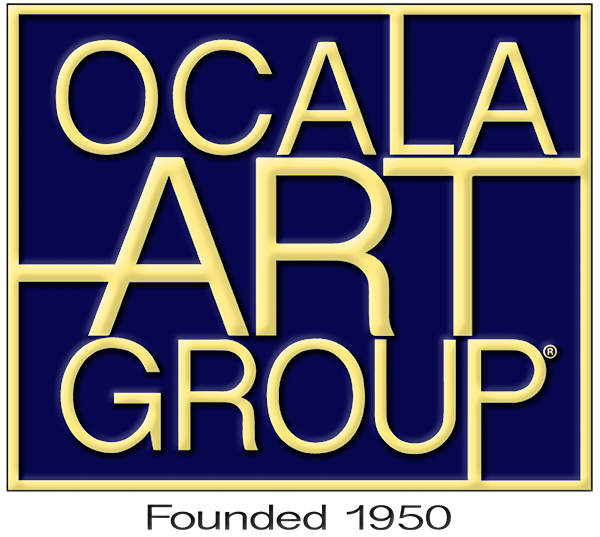Meeting at 12 PM Demonstration at 12:30 PM
“Creating a Painting from Your Photo”
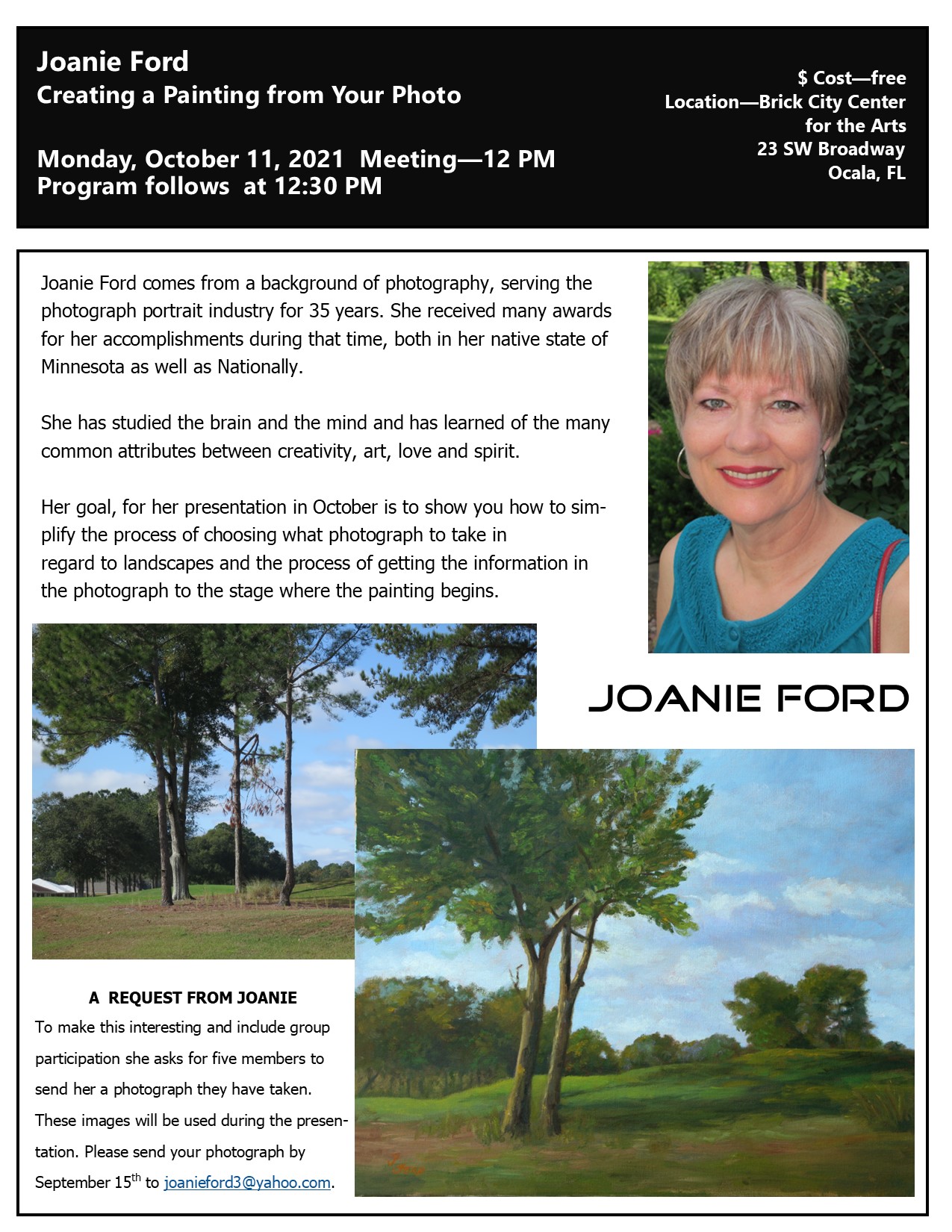
OAG members were treated to an Awesome presentation by Joanie Ford! Joanie and OAG Program chairperson Gail Bannock received many, many thanks from those attending!!
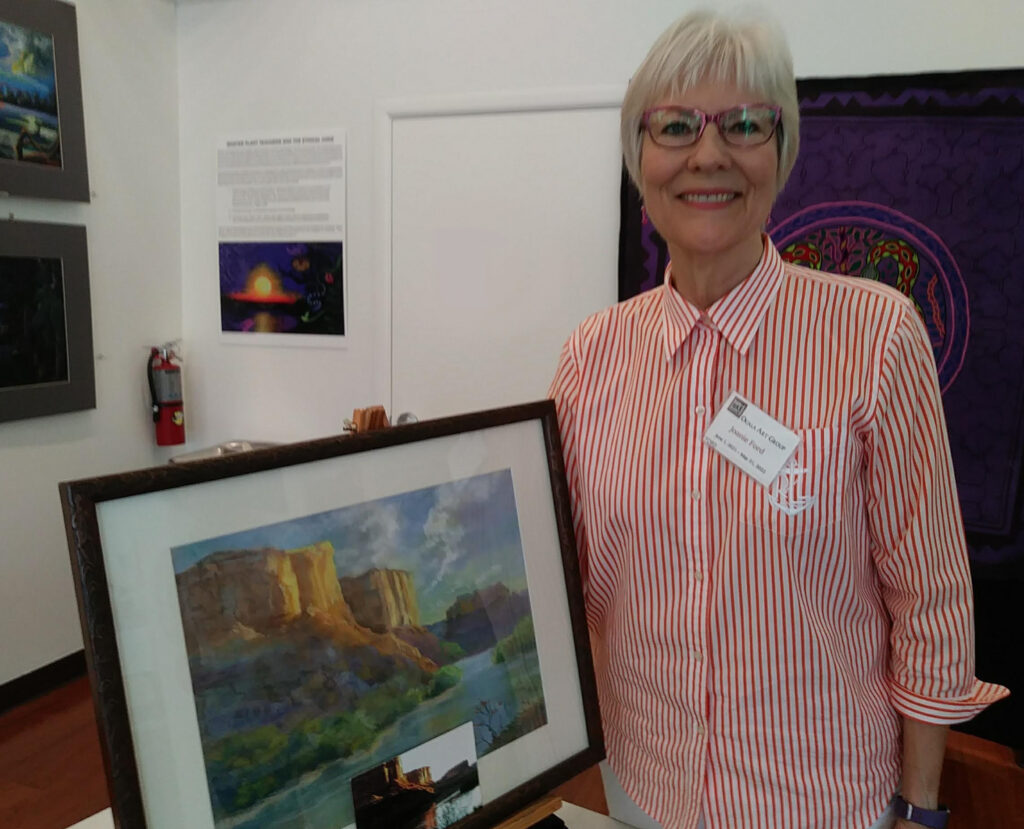
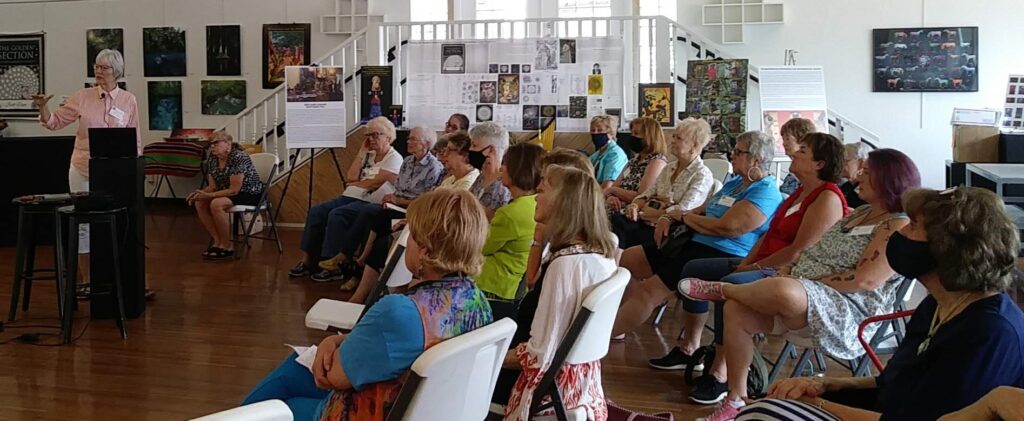
Visit Joanie Ford’s website – https://www.joanieford.com
Below are just a few crumbs from Joanie’s talk. Read on!
Camera Ready? Think First!
When photographing a scene, Joanie suggests that we stop before we click away!!!!
Spend time looking at the scene
Pick a good subject
Think about cropping (zoom in)
Take several different photographs
Look for drama (lighting and focus)
Be intentional
Just because a scene is beautiful does not mean it will make a good painting
Remember: Composition is the gravity that holds a painting together (Frank Webb).
Software
Joanie uses software to translate the reference photo into a well composed painting.
Joanie keeps a visual reference sheet of many types of composition and studies the photo for a close match.
She then applies her favorite software tools to look for the painting in her photo.
Photoshop Elements $79 for editing the photo
Value Study App – for making Notans and value studies (free) Saturate values for stronger contrast.
FotoSketcher App – For showing you ideas (free)
Composition is KEY!
Ultimately, the painting is not about the subject. It is the COMPOSITION that matters.
Crop to find the DRAMA. The area of greatest contrast becomes the focal point. To keep the viewer’s eye in the painting use branches or linear elements as “pointers” leading the eye to the center of interest.
Arrange all shapes to integrate toward one place. Use light to lead the viewer to the focus, around the painting, and back.

Reverse (flip) the photo for a different view. Look for a possible S composition (see below). Re-position elements along a diagonal. Avoid bright colors at edges or corners that pull the eye outside the frame.
Think about the illusion of depth. For depth of view and atmospheric effects, add lavender.
Choose dominance of land or sky, never equal.
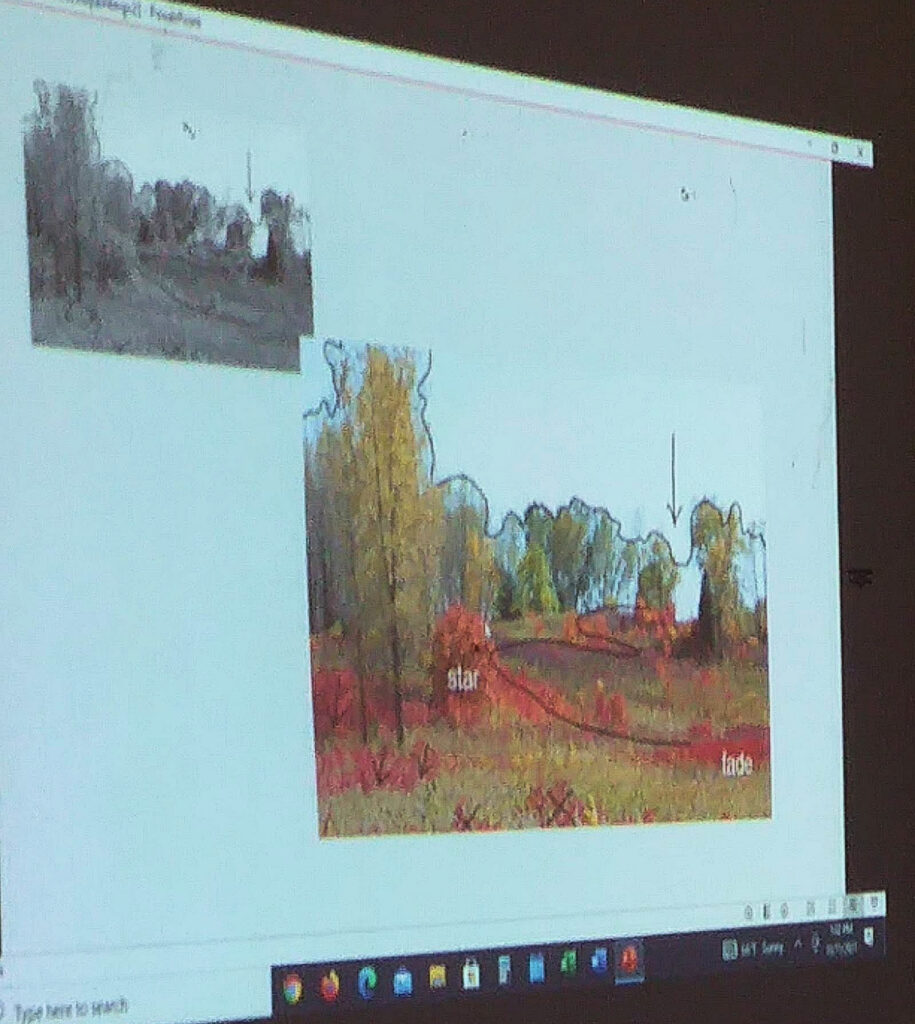
SIMPLIFY. Remove unnecessary objects. Focus attention on what is important and minimize detail in the rest of the painting.
How much detail? The amount of information depends on the size of the painting.
Count areas of the painting. Too many? Look for strong value masses. The boat! Find areas that can be removed (a second boat), or cropped (at top of the photo) for fewer areas.
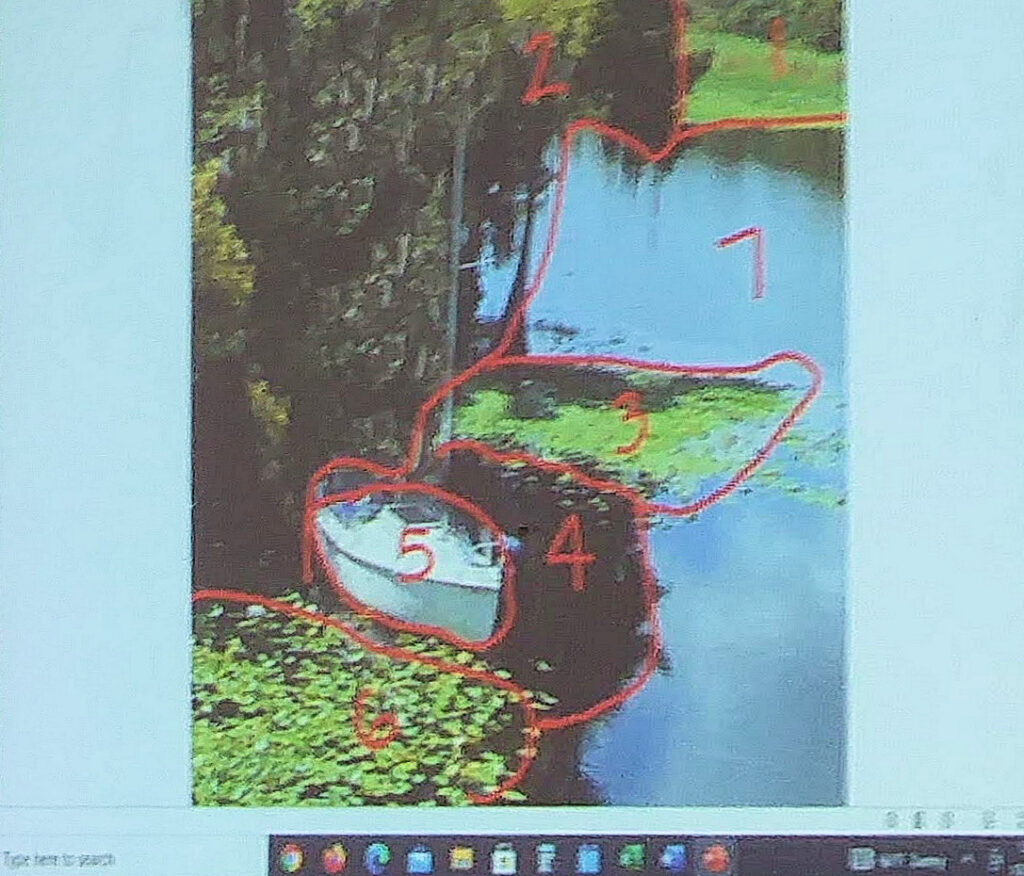
Apply the Principles if Art and Design: Simplification, Repetition, Rhythm, Balance, Dominance, Emphasis, Gradation, Contrast Harmony, Variety, Movement, Proportion, Leading Lines, Rule of Thirds, Rule of Odds, Triangles.
Joanie showed us that there is much to consider before we begin a painting. She shared with us the tools that help translate what we saw through the camera lens, and how to use the principles of composition to bring our vision to life in a painting that draws the viewer into a magical scene. Thank you, Joanie!
